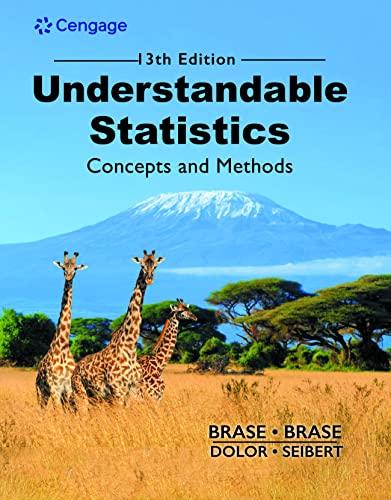Marketing: Shopping Time How much a customer buys is a direct result of how much time they
Question:
Marketing: Shopping Time How much a customer buys is a direct result of how much time they spend in a store. A study of average shopping times in a large chain store gave the following information:
Shopping alone: 18 min.
Shopping with a family: 32 min.
Suppose you want to set up a statistical test to challenge the claim that people who shop alone spend, on average, 18 minutes shopping in a store.
(a) What would you use for the null and alternate hypotheses if you believe the average shopping time is less than 18 minutes? Is this a right-tailed, left-tailed, or two-tailed test?
(b) What would you use for the null and alternate hypotheses if you believe the average shopping time is different from 18 minutes? Is this a righttailed, left-tailed, or two-tailed test?
Stores usually find ways to engage the interest of shoppers by setting up activities—perhaps demonstrations, free samples, and/or opportunities to test the products.
These are particularly enticing to families with children who have a tendency to be very curious. Suppose these activities were set up in a store and you now wish to challenge the claim that a person shopping with a family spends on average 32 minutes shopping in a chain store.
(c) What would you use for the null and alternate hypotheses if you believe the average shopping time is more than 32 minutes? Is this a right-tailed, left-tailed, or two-tailed test?
(d) What would you use for the null and alternate hypotheses if you believe the average shopping time is different from 32 minutes? Is this a righttailed, left-tailed, or two-tailed test?
AppendixLO1
Step by Step Answer:

Understandable Statistics Concepts And Methods
ISBN: 9780357719176
13th Edition
Authors: Charles Henry Brase, Corrinne Pellillo Brase






